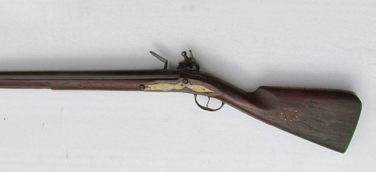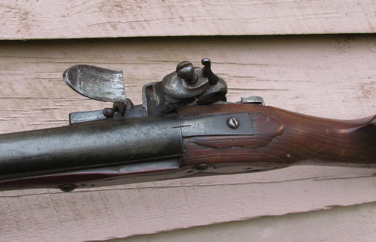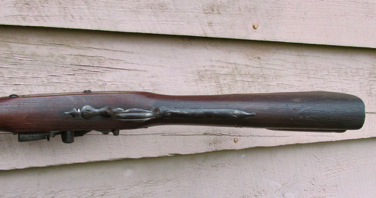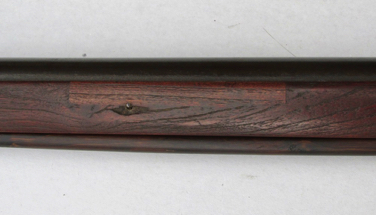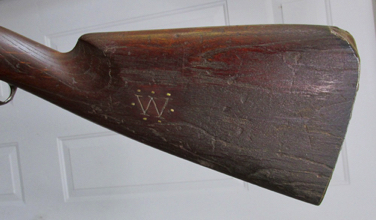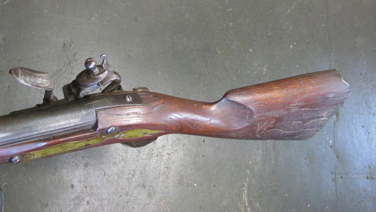And now for the stereotypical story we all love to hear (and of course, wish would happen more often!): very old and very crusty, it was found in a closed-off space under the stairs in a dilapidated house prior to being torn down completely. I'm not sure exactly how old the house actually might be, but I did manage to track things backward to a bit prior to the Civil War. Going further would involve more work at the county courthouse that I've not accomplished yet. My suspicion is that this ancient warhorse was brought down from New England in the early 19th century, for this area of Pennsylvania saw a large influx of settlers out of New York and New England after the Revolution (down the Susquehanna River's north branch) and in fact was initially claimed by Connecticut until the point was settled via the brutal "Pennamite Wars" and their aftermath.
The stock is of cherry and overall the gun displays a large amount of use and repair as well as secondary work over the course of its lifetime. The box may be original, as it too is cherry, although the brass studs and inlay look to be more a product of the late 18th or early 19th centuries and surely were added by a previous owner. Despite evidence of considerable use, it was obviously maintained because missing or broken pieces of wood have been replaced fairly competently, if not perfectly matched. I'm not clear on when this may have occurred but it is definitely not more recent work. I'd define this large fowler as a 'parts gun' and it appears to be of New England origin as somewhat of a prototypical clubbed stock; while definitely slab-sided to some degree, it is more rounded than later pieces with well-defined slabbed sides.
The barrel is of at least .77 or .78 bore and is 56 inches in length, fully round with two side flats that are crudely relieved along their upper edges for the same length as the forearm (not the entire forend, in other words). There are no markings on it but it's a beast of a barrel with an extremely massive breech. The doglock has been identified as a Swedish martial lock that probably is a very early model 1716, but may predate this by a decade or two given some stylistic details. I'd feel comfortable dating the lock anywhere from ca. 1700 through 1720. How it got to the colonies is a bit of a mystery, as "Nessie" (a name bestowed upon this piece by a creative friend) probably dates to the 1720s or 1730s at latest, so the lock could not have been particularly old when it was recycled. Furthermore, scandinavian arms or parts of such arms were rarities here. Also present are a simple nailed-on sheet iron buttplate, a thin sheet brass sideplate and a recycled French musket guard of the late 17th century.





